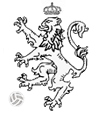
Document | arfsh.com
A document created by arfsh.com for the whole football community
The Free Critic #3
Author: Isaque Argolo | Creation Date: 2021-10-04 18:18:04
Data providers: Isaque Argolo.
Archive(s): .
Moreno & Tango Isaque Argolo | 01/10/2021 I:Moreno was an artist, indeed. Not only as a dancer but also on the field. Moreno was always joking around with his artistic repertoire. The attendance praises him as a piece of skills is shown. Moreno was confident, always sure of his actions, exuded an essence of certainty. Sometimes Moreno would stop while at the middle of the pitch, and start dancing with the ball. Meanwhile, the opponent, who was in front of him, was always caught up in the trick. Moreno literally started dancing tango in front of thousand of people. The football pitch was his stage.* * *When Opata joined Sparta Isaque Argolo | 01/10/2021 II:No one really know this, but after Alfréd Schaffer's first time with A.C. Sparta, the team from Prague tried to fulfill the lack of high representative centre-forwards. Koželuh, Kolenatý and many others tried to recreate something close to what really was considered Václav Pilát: the perfect centre-forward for A.C. Sparta. Schaffer was an option, but he was completely fat and his style, at first impressions, did not match with Sparta's. Then, Sparta aimed for another hungarian: Zoltán Opata. I can't really remember the story very well, but, without anyone knowing, Sparta brought Opata to Prague with a different name. The star played a single match for them — it was a friendly one — and returned to Budapest. Káďa tells this story with much better precision than me. I will post it eventually, just a matter of time. However, I thought it would be interesting to comment about this specific moment.* * *Potya x Scarone Isaque Argolo | 01/10/2021 III:Oh, the Ambrosiana days. Internazionale were having their first great decade. Back in the day, they tried to mold a much stronger team, with the names of Giuseppe Meazza, Héctor Scarone and many others. They even tried, in 1935, to buy Dr. György Sárosi from Ferencváros. The transfer, however, as the reader knows, did not succeed. Then, during the second half of 1930s, they bought Giovanni Ferrari from Juventus. What an acquisition it was! However, I will comment directly to the first half of 1930s, precisely 1931/32 when István 'Potya' Tóth coached a team which had Scarone as insider & Meazza as centre-forward. During a training, Scarone & Potya were arguing about who had the best shot. From a considerable distance, they sent some shots aiming for the locker room's window. Scarone said he had a better shot than Potya. The Hungarian, on the other hand, full of confidence, doubted the Uruguayan. Scarone failed his shots; Potya had precision, thus won the battle. The young Meazza wrote in a wall inside the locker room: "Potya 1:0 Scarone".* * *A zseniális Orth Isaque Argolo | 01/10/2021 IV:Some time before the exodus of the Hungarian ases, causing the whole territory to suffer a impressive quantity of lack of quality, a star appeared to stand above all other footballers. The boy seemed to master every single aspect of the game, although he did not have enough age. However, as Dr. György Sárosi mentioned many times: "Age does not matter, it is the knowledge which the footballer acquires". And, yes, he was completely right. The boy had a knowledge above the others, an unique capacity of understanding the field around him. Orth, György Orth, was the player, a young one yet the most sapient. Perharps, the most complete footballer since the beggining of the game, a polivalent, versatile footballer, as the old Preston North End, the artistic Preston North End, of Johnny Goodall, taught football.When he was only sixteen years old, he played for the Hungarian National Team and reflected his knowledge into this performance. Already in the 1918/19 season, the Representative Committe wrote a letter regarding Orth, which the reader would know that Schaffer was not the current master of the Hungarian football but the young György Orth. Well, although achieving this patent was hard, Orth managed to do it. All of his attributes reflected the best qualities of Imre Schlosser, Alfréd Schaffer & Kálmán Konrád. As Orth grew and, therefore, his knowledge was increasing, he became an even more impressive footballer. He could play in any position and succeed in them. Orth, nevertheless, reached his peak playing as centre-forward of his squads, possibly due to Orth's attributs were aimed to the axle of the forward line, according to the old style played in Hungary. The first half of the 1920s were the times where the attendance saw art reflected into football. Some people though they would not see new movements and ways of reaching the correct answer to the respective play. Orth, however, week by week, at the peak of his knowledge, performed different tricks, therefore causing impressive reactions. Not only the Hungarians but also the whole Continent recognized Orth as the main master.
© arfsh.com & Isaque Argolo 2024. All Rights Reserved.